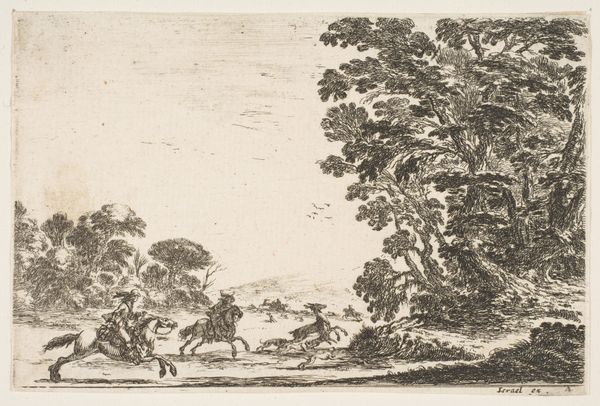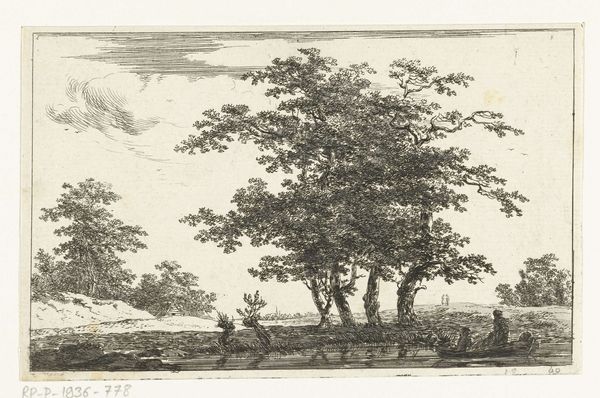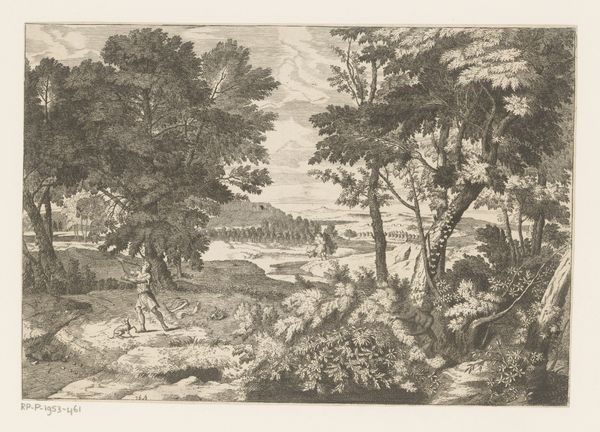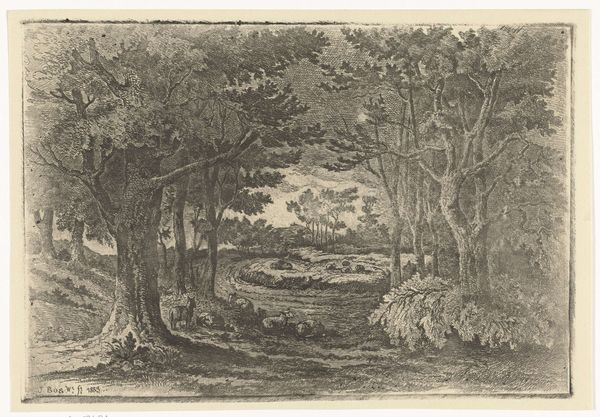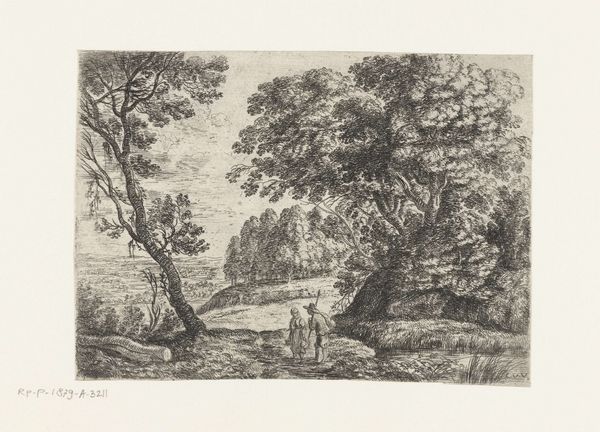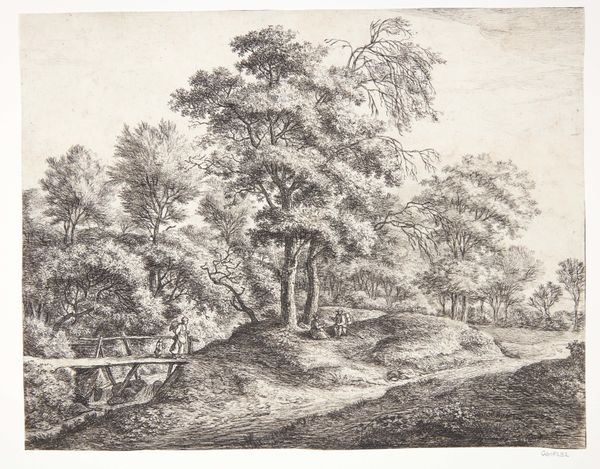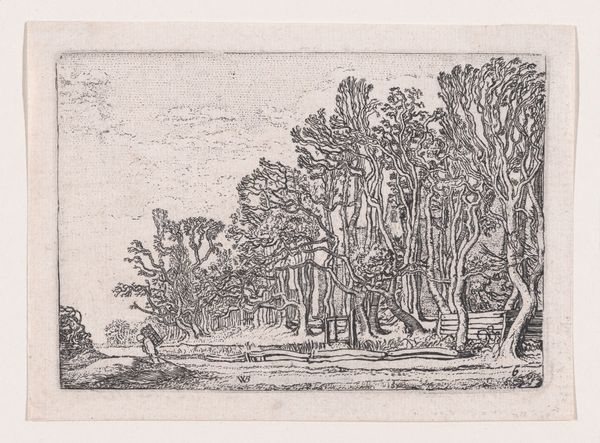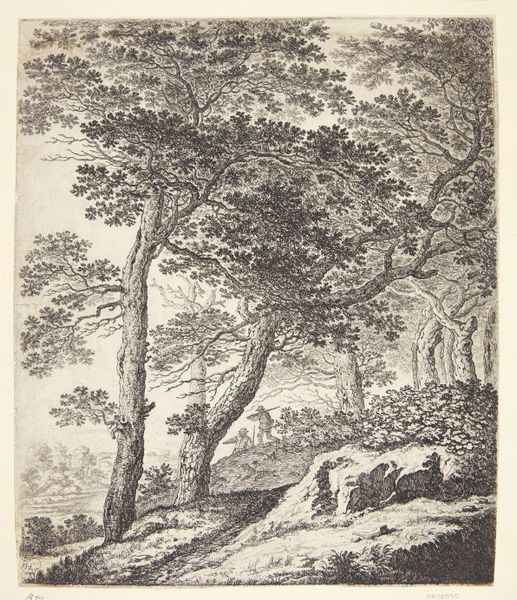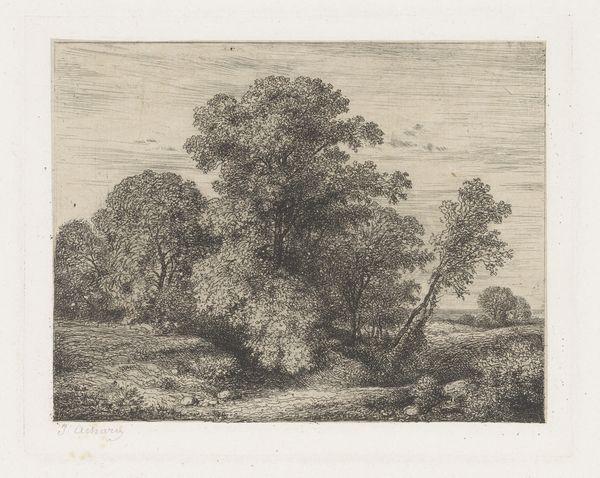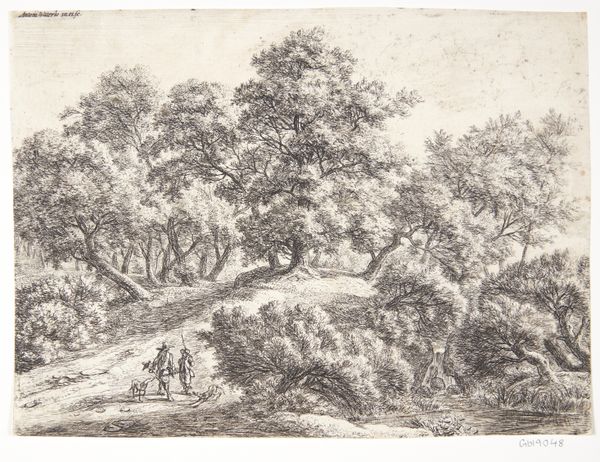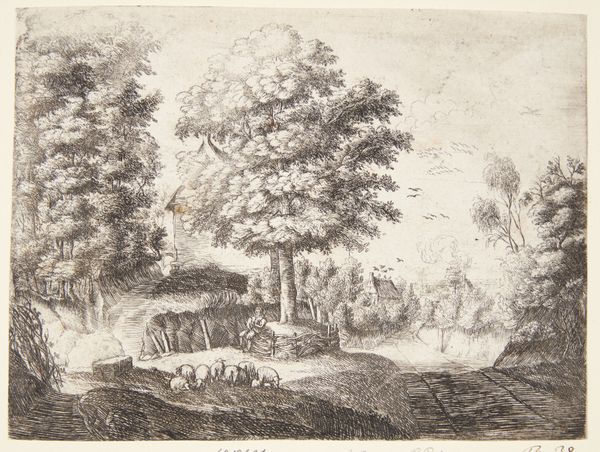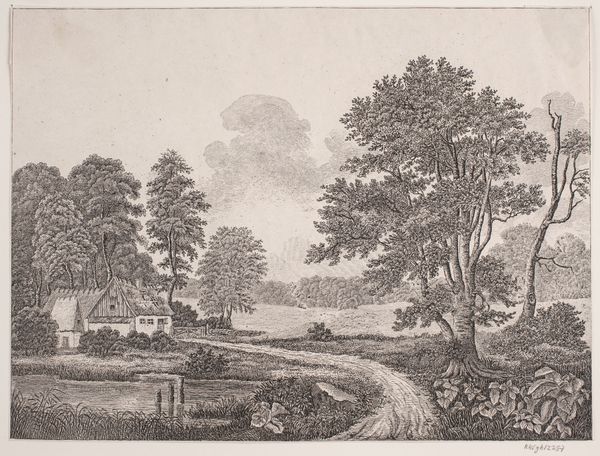
drawing, print, etching
#
drawing
#
ink drawing
#
dutch-golden-age
# print
#
etching
#
landscape
Dimensions: 83 mm (height) x 142 mm (width) (bladmaal)
Jan Ruyscher created ‘Et skovbryn’ using etching, a printmaking process dependent on the division of labor. To create the image, Ruyscher would have applied a wax coating to a metal plate. He then used a fine needle to scratch away the wax, exposing the metal beneath in a composition of lines. The plate was then submerged in acid, which bit into the exposed lines, incising them into the metal. Ink was then applied to the plate and the surface wiped clean, leaving ink only in the etched lines. Finally, paper was pressed against the plate, transferring the image. The nature of the etching process allowed for the mass production of ‘Et skovbryn’. It speaks to the increasing commodification of art in the 17th century, where prints could be sold at a lower cost, making art more accessible to a broader audience. By focusing on the materials and processes of artmaking, we gain a fuller understanding of the social and economic context in which art is produced and consumed.
Comments
No comments
Be the first to comment and join the conversation on the ultimate creative platform.
